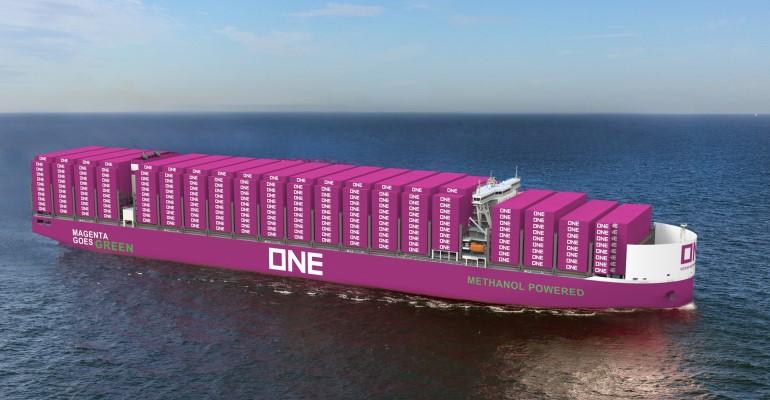The WSC unveiled the Green Balance Mechanism on Thursday which its proposal to the IMO ahead of the MEPC81 meeting March designed to bridge the gap on pricing and availability of green fuels.
John Butler, CEO of the WSC, stated in a media briefing that liner shipping and vehicle carrier operators were committed to decarbonising by 2050 and were already operating ships designed to run on zero emissions fuels.
However, such zero emissions fuels cost three to four times that of conventional fuel oil and are not available at the scale required by the shipping industry.
“So, one of the core challenges that we face is how to craft a global greenhouse gas pricing regulation that can bridge the price gap between the cleanest fuels and fossil fuels and thereby driving investments in renewable fuels without imposing an outsize cost on the global economy,” Butler explained.
The WSC believes its Green Balance Mechanism achieves this goal. A key point behind the mechanism is that it takes fees from fossil fuels and these are allocated to green fuels so the average cost is equal.
The greater the level of GHG reduction on a well-to-wake lifecycle basis – the greater the financial allocation received.
The green balance fee would be reset on annual basis depending on the amount of green fuel used. Giving an example for 2030 WSC said that if 10% of marine fuel used performed better than the Green Balance GFI threshold the fee would $34 per tonne CO2 equivalent, and the allocation would be $267 per tonne CO2 equivalent. If 20% of the marine fuel used performed better than the Green Balance GFI threshold allocation would remain at $267 but the fee would increase to $67 per tonne CO2 equivalent.

The WSC proposal is by no means the only one the table and the start of the month the International Chamber of Shipping (ICS), the Commonwealth of The Bahamas, and the Republic of Liberia, submitted their Zero Emission Shipping Fund proposal to the IMO.
Bryan Wood-Thomas, VP Environment & Climate, WSC said they had held discussions with the ICS and Bimco. “What we as organisations are trying to accomplish is we are trying to put in place a system globally that will facilitate the use of green fuels, because the energy transition doesn't occur unless we transition to these fuels and that is the common objective for all our members,” he said.
As such the WSC does not expect its Green Balance Mechanism or any other proposal to be adopted by the IMO in its entirety.
Jeremy Nixon, CEO of Ocean Network Express (ONE) told the media briefing a key point of the green balance mechanism was that it is no more expensive than it needs to be.
“It's only as expensive as the cost of fuels, and therefore some of the other proposals being put forward by some entities go much higher on the costs and then it comes unclear as to why we are over recovering cost and then who gets that.
“I think this is a really sound and good mechanism and we're taking a leading position by putting this into the IMO. Other people put ideas in, and we'll debate and talk it through and we'll end up with something which hopefully is realistic, pragmatic and takes onboard some of these key points,” Nixon explained.
On the process of reaching an agreed structure at IMO Wood-Thomas commented, “We're hoping to see a constructive dialogue that tries to capture the best points of different proposals and bring them together into what hopefully will be the most effective regime we can get agreement on.”
Copyright © 2024. All rights reserved. Seatrade, a trading name of Informa Markets (UK) Limited.
Add Seatrade Maritime News to your Google News feed.  |

